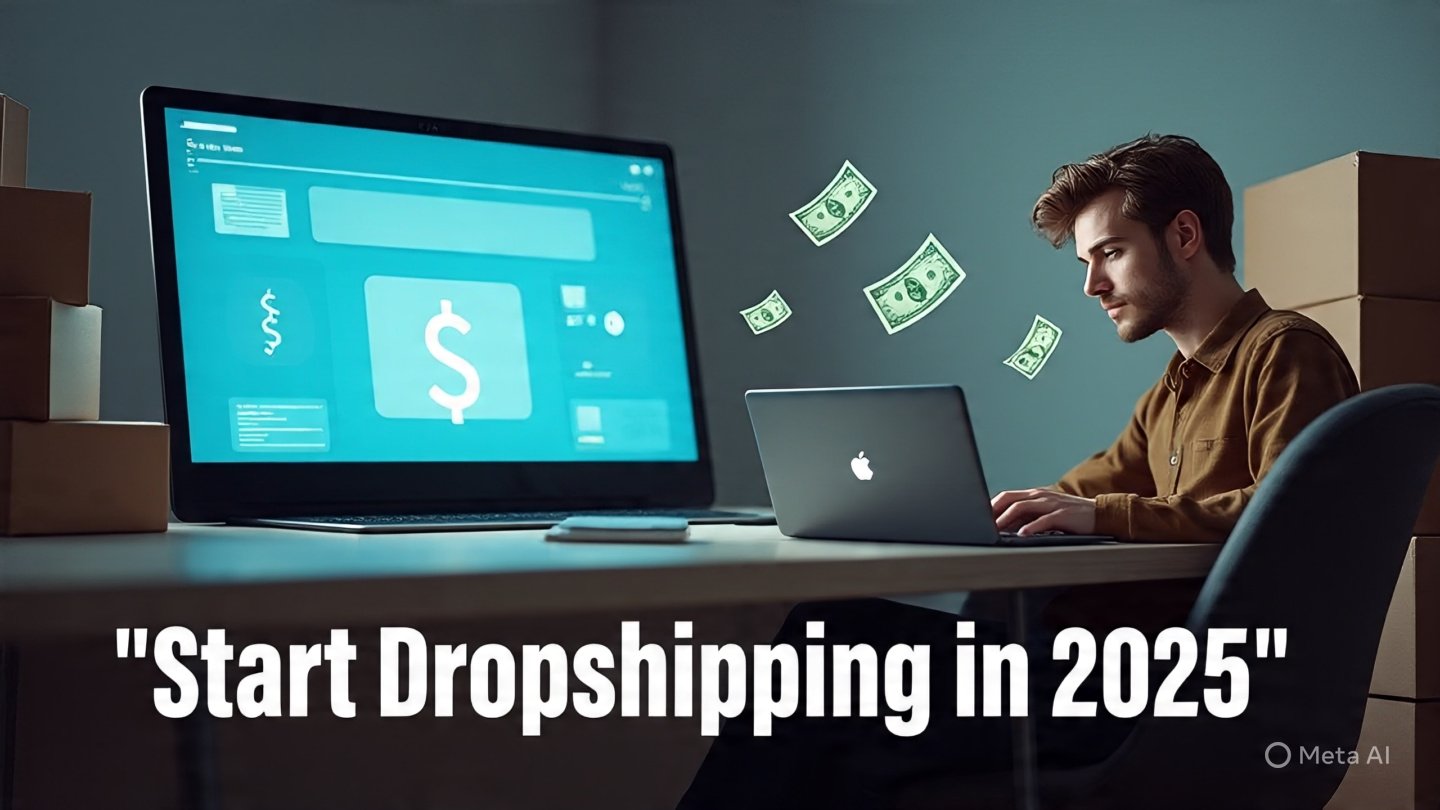Imagine selling products online without ever touching them. No inventory. No shipping. Just profit.
Welcome to dropshipping—one of the most popular online business models in 2025.
Whether you’re a beginner or looking for a low-risk way to enter e-commerce, this guide will walk you through exactly how to start dropshipping in 2025, step-by-step, with no upfront inventory cost.
What Is Dropshipping?
Dropshipping is a business model where you sell products through an online store, but a third-party supplier handles all storage, packing, and shipping.
You:
- List products on your website
- Collect orders and payment from customers
- Send the order to the supplier
- The supplier ships directly to the customer
You earn the difference between the retail price and the wholesale cost.
Why Dropshipping Still Works in 2025
Despite more competition, dropshipping is thriving thanks to:
- 🚚 Faster global shipping (with U.S. and EU-based suppliers)
- 🤖 AI tools for marketing, store design, and customer service
- 🛍️ Niche demand in untapped markets
- 📈 Low startup costs and minimal risk
Step 1: Choose a Profitable Niche
Your niche determines your audience, product type, and marketing strategy.
In 2025, winning niches include:
- Smart home gadgets
- Eco-friendly products
- Pet accessories
- Home workout gear
- AI tools & accessories
- Fashion & minimalist jewelry
- Baby items
- Personal care & grooming
Pro Tip: Focus on a narrow niche with passionate buyers and recurring needs.
Step 2: Find Trusted Suppliers
Your supplier is the backbone of your dropshipping business.
Top supplier platforms (2025):
- Zendrop – Fast shipping, U.S.-based warehouses
- CJ Dropshipping – Quality control and global sourcing
- Spocket – U.S. & EU suppliers
- AliExpress (via DSers) – Great for testing products
- Printify / Printful – For custom print-on-demand items
Vet suppliers for:
- Product quality
- Shipping speed
- Customer support
- Reliability
🛡️ Test orders yourself before scaling.
Step 3: Set Up Your Online Store
You need an eCommerce platform to showcase and sell products.
Best platforms for beginners:
- Shopify – Easy to use, many dropshipping apps, scalable
- WooCommerce (WordPress) – Free but needs more setup
- BigCommerce – Good for larger product catalogs
Use dropshipping apps like:
- DSers (AliExpress)
- Zendrop
- CJ Dropshipping
- Spocket
- Printful
These apps automate product imports, inventory sync, and order forwarding.
🎨 Customize your store’s look to build trust and brand appeal.
Step 4: Add High-Converting Products
Focus on problem-solving or impulse-buy products that:
- Have high perceived value
- Aren’t easily found in local stores
- Have a WOW factor (unique design, solution, or innovation)
Use product research tools like:
- SellTheTrend
- Minea
- Ecomhunt
- AliShark
🔥 Tip: Start with 5–15 products max to avoid overwhelming visitors.
Step 5: Price for Profit
The formula is simple:
Retail Price = Product Cost + Shipping + Marketing + Profit Margin
Aim for 30–60% profit margins. Avoid underpricing yourself—you’re building a real business, not a bargain bin.
Step 6: Market Your Store
No visitors = no sales. Your success depends on how well you promote.
Top traffic sources in 2025:
- TikTok Ads – Fast ROI, viral potential
- Facebook & Instagram Ads – Still powerful if optimized
- UGC (User-Generated Content) – Trust-based conversions
- Influencer marketing – Partner with micro-influencers in your niche
- Pinterest & SEO – Great for long-term free traffic
Start with $10–$20/day ad spend to test your first product.
📱 Pro Tip: Use free tools like Canva and CapCut to make high-converting creatives.
Step 7: Handle Orders & Customer Service
As orders come in, your supplier handles fulfillment. You manage:
- Customer support (answering emails, tracking orders)
- Refunds/returns
- Tracking performance
💡 Use apps like Track123, Re:amaze, or Tidio to automate communication and improve service.
Happy customers = repeat buyers + word-of-mouth sales.
How Much Can You Earn with Dropshipping?
Your income depends on:
- Product margins
- Traffic strategy
- Conversion rate
Sample projection:
- Product cost: $10
- Selling price: $30
- Ad spend: $10
- Net profit per order: $10
Selling 5 orders/day = $1,500/month profit
Selling 20/day = $6,000/month profit
Many successful stores scale past $10K/month—but it takes testing and patience.
Pros and Cons of Dropshipping in 2025
✅ Pros:
- No inventory risk
- Start with little capital
- Work from anywhere
- Scalable business model
❌ Cons:
- Slim margins if poorly priced
- Supplier mistakes = your headache
- Competitive market
- Ad costs can eat profits if not managed
Tips for Dropshipping Success
- 💡 Start small. Test fast. Scale what works.
- 🏷️ Focus on branding, not just selling products.
- 📦 Always test orders before launching.
- 🎯 Choose ONE ad platform to master first.
- 🔄 Collect emails for remarketing and abandoned cart recovery.
